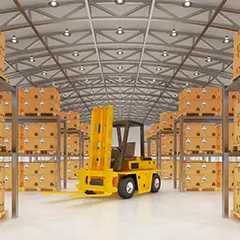
Your Guide to Drayage: Including 15 Tips on How to Save on Its Costs
Why this drayage guide?
Drayage is a misunderstood and controversial charge in the exhibition industry. The goal of this guide: to explain what drayage is, why it exists, and how it commonly calculates. Then, 15 tips are offered to control its costs. After reading, you should feel confident approaching drayage.
What is drayage?
 Drayage and material handling are synonymous. Let’s take a step back to understand how the term came to be. The dictionary defines dray as a low cart without fixed sides, used for carrying heavy loads. A dray horse would pull the cart.
Drayage and material handling are synonymous. Let’s take a step back to understand how the term came to be. The dictionary defines dray as a low cart without fixed sides, used for carrying heavy loads. A dray horse would pull the cart.
The larger word drayage is associated with the cost to move heavy loads over a short distance. The fact that ‘short distance’ has anything to do with it, likely fuels exhibitor infuriation when they see the expense.
For the exhibition industry, trade show drayage service divides into these five parts:
1. Unloading carriers and the completion of inbound receiving documents
2. Delivery of freight from the receiving dock to the exhibitor’s booth
3. Storage of empty crates and extra products on-site or close by
4. The transferring of freight from the booth back to the receiving dock
5. Reloading carriers and completing outbound shipping documents
In other words, drayage is the movement of your trade show materials from your carrier’s delivery vehicle to your booth space for the show and then back again after the show – at a costly price.
The example of a mailroom at a large corporation can be helpful here. Instead of shipping companies (e.g., FedEx) making deliveries throughout the building – which would be a disruptive logistical nightmare – they deliver and receive items at a central location, the mailroom.
Why does drayage exist?
 It is interesting to note that drayage is a cost almost exclusive to trade shows in the United States. Companies overseas that exhibit in the U.S. typically do not budget or understand drayage as a separate cost item. Let’s take a look at why this is.
It is interesting to note that drayage is a cost almost exclusive to trade shows in the United States. Companies overseas that exhibit in the U.S. typically do not budget or understand drayage as a separate cost item. Let’s take a look at why this is.
Trade shows in the U.S. require exhibitors to use the designated trade show decorator (commonly known as the General Contractor) as the exclusive union labor services for items delivering to booths.
The cost of drayage is decided ahead of time by the show organizers (commonly known as the Association) in a negotiation process with the General Contractor (GC) to have costs of the show paid for by the drayage fees charged to exhibitors.
With drayage costs pre-set, you have no options to negotiate the price or to use less expensive services. Before we get too far down the path of vilifying the GC for drayage fees, let’s understand that the GC provides a plethora of services that we often take for granted.
These include compiling exhibitor manuals, registration materials, building an entire infrastructure of information and accounting services before, during, and after the show, let alone operating material handling equipment.
These services are offered upfront with the hope of recouping costs through exhibitor services like carpet and furniture rentals, signage hanging, and of course, drayage. The most consistent and exclusive of these services is drayage because exhibitors do not have to pay for the other services, necessarily.
The problem lies with the variables. Union or non-union influences, show hours, which GC is in charge, whether the GC is providing services directly or subbing the service to a local company, and the location of the event are all factored into the drayage rate for a particular show.
How is drayage calculated?
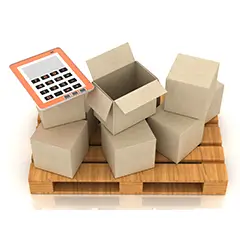 Let’s get into the details of how this highly variable rate calculates. Not surprisingly, it is based on seven complicated factors. Some of this information will be discussed again in the cost-saving tips section.
Let’s get into the details of how this highly variable rate calculates. Not surprisingly, it is based on seven complicated factors. Some of this information will be discussed again in the cost-saving tips section.
Factor #1: Where the freight delivers
This is the highly debated issue of choosing to ship to the advance warehouse or directly to the show. Fees are typically higher when shipping directly to the show site because the demand for labor is high, resources are scarce, and everyone is working on a tight schedule.
On the other hand, shipping to the advance warehouse is not necessarily less expensive. The most significant determinant is the show city itself.
For example, in Las Vegas where GC’s have space to store freight before the show, warehouse options cost less. For a show in a city where space is at a premium and logistics are an issue, warehouse options will cost more. In this case, shipping direct to the show site might be less expensive.
Bottom line: there are reasons for shipping advance or direct, but they vary from show to show — much more on this advance vs. direct topic in the cost savings section.
Factor #2: When the freight delivers
There are time frames specified in the exhibitor services manual. Freight delivered outside the time frame specified will be subject to additional fees, such as overtime.
Factor #3: Weight of the freight delivered
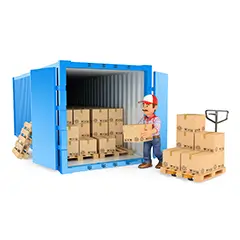 All freight has certified weight slips which details the minimum weight per shipment. Material handling bills by hundredweight, or CWT. (The letter “C” comes from the Latin word centem which means “hundred”).
All freight has certified weight slips which details the minimum weight per shipment. Material handling bills by hundredweight, or CWT. (The letter “C” comes from the Latin word centem which means “hundred”).
Each piece of freight is weighed and rounded up to the next 100 pounds. For example, a 215lb crate rounds up to 3 CWT, a 479lb crate rounds up to 5 CWT, etc. Unless an item is especially oversized, freight dimensions are usually a non-determining factor in the drayage rate calculation.
If you are not careful about the way you package your items and exhibit at a show which charges a minimum amount per item, drayage fees can add up quickly. Much more on this in the cost savings section but for now here are a couple of examples of costly drayage fees:
Example 1: You ship five separate boxes that each weigh 25lbs to a trade show that charges $100 per CWT and has a 2 CWT minimum charge. Because each box is packaged separately, the trade show charges each box at the 2 CWT minimum rate.
In other words, each 25lb box is charged as though it were a 2 CWT (200lb) box! Therefore, you’re charged $200 per box. $200 x 5 boxes = $1,000. Your total cost for shipping the five 25lb boxes is a whopping $1,000.
Example 2: You package all your items together in one crate that weights 408lbs. The trade show charges $100 per CWT with a 2 CWT minimum charge. Because the trade show rounds up to the nearest CWT, your 408lb crate rounds up to 500lbs or 5 CWT. Your total charge is $100 x 5 CWT = $500.
Factor #4: The type of transportation carrier delivering the freight
When freight arrives via a common carrier, drayage rates are typically 30-40% less expensive than freight from specialized carriers. The reason for this is common carriers will floor load your crates or palletized freight, rather than stacking it vertically.
Floor loading is easier to move with a forklift, thus a lower drayage rate. Specialized carriers that stack freight, blanket wrap items, or mix loads will be charged a higher rate because these shipments require additional labor, time, and equipment.
Factor #5: The kind of freight unloading
Freight ships in a crate, a mixed load, in a blanket wrap, or a percentage of each type. Uncrated and/or blanket-wrapped shipments can incur 35-55% higher rates than floor-loaded freight. Furthermore, how you pack your freight will determine which CWT rate is charged.
Created freight has the least expensive CWT because it is easier to store and move. Palleted freight is generally more expensive because it requires more care during transport and unloading.
“Special handling” items such as oversized pieces of exhibitory and tech-laden displays incur the highest rate per CWT because of their need for additional labor, time, or equipment to move.
Examples of crated shipment that can unload easily at the dock without additional handling
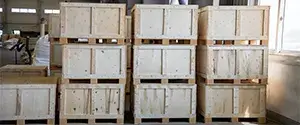
Factor #6: Whether special handling applies
Any freight that requires additional labor, time, or equipment to move will result in additional fees. For example, if your freight truck arrives with six crates, three pallets, and one special item, you will likely see individual charges for each.
If your freight comprises of a couple of crates but several special items, the entire freight load might fall under special handling – even the crates – leading to inflated CWT rates.
Examples of material that would require additional handling. Notice several different packages, stacked, and loose items.
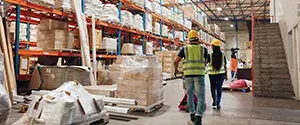
Factor #7: When your shipment is handled
Each show will have designated standard time and overtime hours, detailed in your exhibitor manual. Overtime rates can be as much as double standard rates!
It is important to note that labor, service, and material handling rates vary widely from city to city, show to show. The event’s size, the facility’s design, labor union issues, move-in and move-out periods, and holidays can all affect rates significantly. The most predictive info you can get on drayage rates are the ones quoted for each show in your exhibitor manual.
Here is a graph we generated from the EDPA Exhibition & Events Industry Labor Rates Survey published in 2017. The survey provides labor, services, and drayage cost averages in major North American cities.
The graph shows all three direct options are more expensive compared to shipping to the advance warehouse, and this is the case in all cities. A wide margin of fees can be seen city by city as well.
As mentioned earlier, the GC is responsible for many operations and expenses behind the scenes. They run an entire operation that includes renting marshaling yard space, setting up mobile offices, portable scales, paying staff to direct the labor that is operating forklifts and dollies, material check-in, and paperwork processing.
Drayage is known as merely moving materials to and from a show, but there are many players and steps involved in the process, and the GC uses drayage fees to pay for it all. So, paying drayage fees is unavoidable. However, there are plenty of opportunities for exhibitors to lower drayage costs, and we will cover this in the next section.
15 Tips to Control Drayage Costs
Although exhibitors typically name drayage as the most inflated, infuriating, and nonproductive show expense, it should be clear from reading the previous sections why and how drayage is calculated.
The rates are pre-determined, non-negotiable, and complicated. It might seem like exhibitors have no control over the costs, but there are ways to lower costs. We offer a list of 15 tips here.
Tip #1: Decide between shipping to advance warehouse or show site
Since this is one of the most significant decisions to make, this first tip will have a bit more detail than the others. There are many factors to consider when deciding between these two options, so let’s lay out the pros and cons of each.
Advance warehouse pros:
Verify delivery: You can verify delivery to the GC ahead of the show.
Early set up: Your freight gets on the show floor first so you can set up as soon as possible.
No waiting time charges: Unlike the direct to show option, advanced freight will not be subject to waiting time charges.
Free storage: You have a 30-day window of free storage which can help you manage your shipping calendar. This is particularly important if you are transshipping your booth from one show to the next.
For advance warehouse in 2017, cost per CWT ranged from $64.35 (Reno) to $168.75 (New York)
Advance warehouse cons:
Potential higher cost: Advance freight (AF) usually costs more because it requires extra handling to receive and store it before the show. However, the additional costs are generally marginal compared to the direct rate and likely will not be a deal-breaker.
Potential for overtime rates: AF is always brought in on the first move-in day. If things are slow-moving, the labor might switch to overtime rates.
Potential for damage: AF is stored on common carrier trailers without any strapping or tie-downs to help secure the load, and since there is more handling involved, the likelihood of damage is higher. Furthermore, damage claims have very limited liability with GCs – usually limited to no more than $50 per item.
Potential for misplacement: AF is received at a facility that can be juggling many shows at the same time, and this can increase the likelihood of misplaced shipments.
Extra lead time: AF needs extra lead time to meet the cut off deadline which is usually a week before the first direct freight move-in date.
Direct to site pros:
More preparation time: You have more time to prepare your shipment, which allows for last-minute updates to your equipment or marketing message.
Less potential for damage: There is less handling involved in direct shipping, which means less opportunity for damage.
No overtime rates: You can schedule your freight to arrive during straight time hours at the show site, avoiding any overtime rates.
Avoid special handling fees by using padded van carriers: You can work with padded van firms and carriers that use tie-downs and have air ride equipment to the show site.
No waiting time fees: If you use large over the road trucking companies that charge a flat fee, you can avoid waiting time charges even if they have to wait in the direct shipment line.
Insurance: Shipments can be fully insured, and the shipper has a vested interest in protecting your shipment from the location all the way to show floor.
Opportunity to shop around: You have the chance to shop around and get the best shipping rate because direct is almost always less expensive than advance freight.
For direct crated shipments in 2017, cost per CWT ranged from $59 (Detroit) to $149.58 (Washington D.C.)
Direct to site cons:
Delayed set up time: You do not get your freight on the floor as early as AF, so depending on the show this can be a BIG deterrent to shipping direct.
Fees for using special carriers: Airfreight forwarders usually charge waiting time for sitting in direct drayage lines. Carriers like UPS and FedEx require special attention since they will not wait and you are typically charged a special handling fee for using these types of carriers.
No easy delivery verification: You are not able to verify that your freight has arrived ahead of time. To verify delivery, you will have to reach out to your carrier directly.
Potential for delays: You do not have much wiggle room if the shipment delays, say to poor weather.
For direct crated shipments with special handling in 2017, cost per CWT ranged from $75.50 (Louisville) to $189.54 (Pittsburgh)
Bottom line: there are reasons for choosing either type, and it varies from show to show. Below is a table from the EDPA study. As you can see, almost all services and labor have become more expensive. Note that the advanced warehouse is only marginally more costly compared to direct.
Tip #2: General Contractor rentals vs. bringing your own
See what the GC provides in the way of exhibit rentals and labor. Tapping into GC rentals and labor may work to your advantage, especially for remote show locations. Compare the costs of rentals vs. bringing your owned carpet, furniture, and exhibits to a show.
If you opt to bring your own, shrink wrap the carpet it into a crate to prevent uncrated shipment surcharges. In other words, look at the GC as your partner, not your enemy and see if their services complement your booth needs when shipping and drayage costs outweigh rentals costs.
Tip #3: Material-handling package deals
Some show organizers negotiate to have the GC create packages such as free freight on a certain number of pounds per square foot of booth space or drayage discounts if you rental booths. Other GCs allow drayage discounts if you are using them as your shipping carrier.
Tip #4: Consolidate shipments
To make the best use of the 200lb minimum that most shows have, consolidate your show materials into crates. Let’s say you send two crates weighing 114lbs and 223lbs in separate shipments.
Assuming the drayage rate is $80 per CWT, your invoice will be $400 for 5 CWT. But if you’re able to combine these shipments into one larger crate, your bill would be $320 for 4 CWT – an instant savings of $80.
Tip #5: Send small shipments to the hotel and hand-carry them to the show to avoid the 200lb minimum
Small package carriers such as UPS or FedEx do not provide a separate bill of lading required for drayage processing. The result? Delayed delivery to your booth until the proper paperwork generates.
Tip #6: Avoid sending mixed loads
If you have items in your crate that are loose, such as carpet or a pad, separate them from the crated shipment by creating separate bills of ladings. This way the GC will not turn your entire crated shipment into special handling which is usually 30% more.
Tip #7: Ship with your display house
Work with them to consolidate and ship your freight. Due to deep volume discounts they receive, their rates will typically be less expensive than the additional costs of special handling drayage charged by the GC.
Tip #8: Use “padded van” companies
Trucking companies nicknamed padded vans usually charge a flat rate and do not charge waiting times for direct drayage shipments like airfreight companies do.
Tip #9: Develop a lighter “hybrid exhibit”
Work with your display to help you lighten the cost of your exhibit program with the use of fabrics and other techniques to reduce your shipping and drayage costs. The right mix of exhibitry will balance better transportation and drayage costs with a little more on-site labor as these fabric exhibits tend to require more set up time.
A full-service display house can show you options. Don’t keep using the same heavy exhibit because you can’t afford a new one. You can’t afford to get a new one with all the increases in drayage rates! GC’sknow that exhibits are getting lighter, so they are increasing the rates of drayage to compensate.
Tip #10: Take photos and label everything
Take the time to take pictures of shipments and label all packages underneath the stretch wrap in case the wrap is removed or torn. Identify shipments on BOLs as “one pallet of 8 boxes” instead of just “one pallet.” The photos will be your evidence against erroneous charges.
Tip #11: View shows independently, read the fine print
Always look at each show’s rules individually, not just the drayage rate. The term “read the fine print” comes into play here. One slip up can be very costly.
Tip #12: Audit paperwork, voice concerns
As soon as you receive it, review every line of your drayage invoice for charges you don’t understand or recognize. In most cases, a discussion with service-desk personnel while still on-site will suffice. Once everyone leaves the show city, it’s challenging, if not impossible, to correct errors.
The show organizer walks a tight rope between the costs of services it receives from the GC and the ability to get exhibitors to participate in their show. Consider voicing your concern about usual drayage fees or charges to them.
Tip #13: Send less literature and giveaways
Look to decrease shipment weight by minimizing collateral literature and promotional items that you bring to the show. Instead, invest in a seamless client follow up system. An estimated 80 percent of collateral ends up in the trash instead of back at attendees’ offices.
Tip #14: Share space with another company
This is called a co-op relationship and can be an especially good option for first-time shows. Share expenses proportionately.
Tip #15: Work with a local “destination management firm.”
They can supply props and structures that make themed exhibits – a fun, memorable, and cost-saving option to reduce shipping costs and lower drayage. These work great in remote locations.
Looking ahead: how drayage rates can change in the future
 Let’s take a look at a few different ways drayage could be charged at shows. Some of these have been experimented with already, and any of these can become the norm, mainly if exhibitors use a collective voice to advocate for them.
Let’s take a look at a few different ways drayage could be charged at shows. Some of these have been experimented with already, and any of these can become the norm, mainly if exhibitors use a collective voice to advocate for them.
A flat drayage rate This would be a simple rate for everyone, based upon the amount of weight you brought to the show. Whether you are delivering 500lbs or 5000lbs, the rate for each 100lb increment would be the same.
Eliminating drayage loopholes and deductions They do exist. If you opt to rent an exhibit from a GC, drayage might be free. When you use the GC’s transportation company, they may offer you discounts on your drayage rate.
Paying your fair share With this option, everyone pays something which collectively lowers the rate for everyone.
Consumption drayage (alternative minimum drayage) Similar to a flat drayage charge, this option connects the drayage rate to the amount of booth space you order — a simple drayage rate per 10×10 booth space, for example. Island exhibits would have a different rate, perhaps a little more. With this option, everyone could budget for the show, and you can set a maximum drayage rate per 10×10 booth space.
It’s all about making things simpler and creating certainty and consistency. Ask your Association to consider fixed rates and other more straightforward drayage ideas with their drayage contractor. Speak up and praise all parties involved when you see the implementation of these at a show.
Drayage demystified. Now outsmart the system!
We hope this guide helped to demystify drayage. Yes, it’s frustrating that getting an exhibit from the dock to the booth space and back costs more than shipping it from California to New York. We suggest keeping the mindset that drayage is a given in the exhibition industry here in the U.S.
Though your hands are tied with drayage options, you can plan wisely and save a lot of money throughout the process. Don’t let rising drayage costs force you to downsize or cancel your trade show program.
Use the 15 tips listed above and work with your Account Managers at your exhibit house – they should be able to help you through this process.

